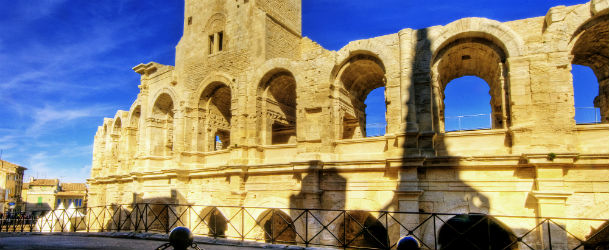When it comes to exploring Roman history, the first place most of us think of is probably Rome itself, where world-famous landmarks like the Colosseum and the Pantheon help ensure that Italy’s capital attracts millions of visitors each year. Of course, the Romans’ influence extended much further than the architecture of their capital and this most expansive of empires left its lasting mark across Europe and indeed beyond. The good news is, there are plenty of opportunities to explore the Romans’ legacy on a number of river cruise itineraries.
Italy – The Po
Rome
OK, an obvious place to start, but cruises along Italy’s Po River sometimes include stays in Rome itself before or after you set sail. Even if you’ve never visited the city, its star Roman attraction needs no introduction. The Colosseum is one of the city’s biggest attractions in every sense, dating back to the first century AD and offering a fascinating look at both Roman engineering and history. The Pantheon is another of the city’s most popular landmarks, dating back as far as 27BC, though the current structure is Hadrian’s work, dating back to around 126AD. The Forum of Augustus is another key architectural landmark, sprawling and impressive, it’s where you’ll find the remains of the Temple of Mars. Indeed, the Palatine Hill area in Rome is the place to go if Roman history is the focus of your visit as it was the city’s political centre during the days of ancient Rome.
 Verona
Verona
This beautiful and romantic city will forever be synonymous with being the setting for Shakespeare’s Romeo and Juliet but it is also home to a fantastic piece of Roman history. Verona is sometimes offered as an excursion from the Po port of Polesella and if you do stop there, it’s certainly worth seeing its splendid amphitheatre which is still in use as a theatre today, hosting everything from operas to rock concerts.
France – The Rhone and the Seine
Arles
The Romans occupied Arles way back in 123BC and turned it into one of the key cities of their expanding empire. It’s a UNESCO World Heritage Site with good reason and one of its most popular landmarks is its huge Roman amphitheatre Les Arenes, which seats 20,000 people and is still in use today. The Cryptoporticus galleries offer a look at a different side of the Roman’s technical ingenuity, as a subterranean support system, while Les Alyscamps is another popular Roman attraction, being an outdoor Roman mausoleum.

Lyon
Lyon’s another celebrated French city with plenty of Roman history to explore and 2,000 years of history to its name. A former Roman colony, it was once the capital of Gaul and is still one of France’s largest cities. The most notable Roman attractions are the Theatres Romains de Fourviere – two amphitheatres which are each over 2,000 years old. To find out more, be sure to check out the city’s fascinating Gall-Roman Civilisation museum.
Reims
If you find yourself on a cruise along France’s Seine river, one of the city’s you’ll likely have the chance to explore is Reims. The Romans’ involvement here dated back to the time of Julius Caesar’s conquest of Gaul and Trier subsequently became an important city during the times of the Roman Empire. Today, the most significant site from Roman times is the imposing Mars Gate, or Porte de Mars, an arch which dates back to the third century, dedicated to the Roman god of war himself. The Cryptoporticus also dates back to this time and is a very well-preserved passageway built by the Romans.
Germany – The Moselle

Trier
The Romans occupied many territories in ancient Gaul, and a cruise along the beautiful Moselle will often take you to Trier, which boasts the remains of several Roman structures. Tours are often available which take you to all the most notable ones, including Porta Nigra and ancient gate which dates back to 144AD, the enormous Roman Imperial Throne Room, the Old Roman Bridge ‘Romerbrucke’ and the Barbara Imperial Baths. There’s also a Roman Amphitheatre which may well date as far back as the first century AD.
Serbia – The Danube Belgrade and the Iron Gate
Belgrade and the Iron Gate
Take a river cruise along the lower section of the Danube River and you’ll have the chance to see for yourself just how far the influence of the Roman Empire stretched. Though the history of Serbia’s capital predates them, the Romans conquered Belgrade and it became part of their military frontier. Key to the Belgrade’s defence was its huge fortress of the same name and today, it exists as the city’s most popular landmark and offers some incredible views. After leaving Belgrade, you’ll pass through towering limestone gorge known as the Iron Gate, which is where you’ll find another landmark of the Roman’s legacy in the region. Known as Trajan’s Plaque, it commemorates the completion of the Roman Emperor’s military road, which was completed in 104AD.
Whichever of these incredible rivers you want to explore, we have some fantastic itineraries available, so call your River Cruise Concierge on 0800 197 0854 to book your place.
Main pic: Wolfgang Staudt



